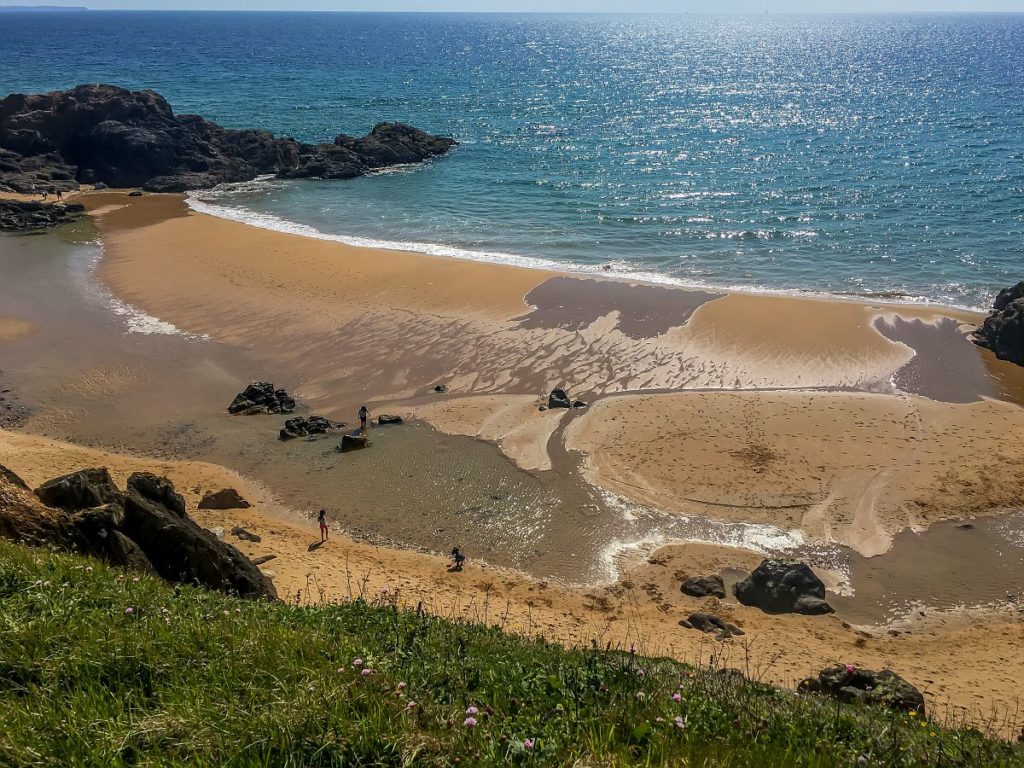
Finistère got its name from the Romans, “Finis Terrae” means “end of the world”. Depending on your point of view, the name of the region in Breton reads very differently or very similarly: “Penn-ar-Bed” translates as “beginning of the world”.
Today, Finistère is the most north-westerly department of France and the outermost tip of Brittany. For the French as well as for recreation-seekers from England, Ireland and the Benelux, the region is a very popular holiday destination because of its many beaches and picturesque towns.
Discover now:
Finistère Holidays
Brittany has around 2,500 kilometres of coastline, 1,200 of which form the border between sea and land in Finistère. This makes it the perfect place for a seaside holiday. Some of the most beautiful beaches in Brittany can be found in Finistère. Whether in Crozon, Carantec, Audierne or on the islands of Île de Batz, Île Molène and the Glenan archipelago: the combination of rugged coastline and fine, white sand is impressive at any time of year. Add to this the spectacular change of the tides. So if you spend your holidays on the coast of Finistère, you will not only be offered one landscape, but thanks to the ebb and flow of the tide, always a whole dozen.
Because of the great economic importance of tourism, Finistère is very well developed for holidaymakers. A mix of holidays on the beach and in the medieval towns is the most popular combination for holidays with the family. For a retreat, holidaymakers can choose a holiday home in Finistère from the wide range on offer or spend their holiday on a campsite. Speaking of camping: many campsites offer direct access to the sea or even an unobstructed view of the sea, where else can you find that?
Active Holidays
Finistère offers plenty of scope for active recreation on land and in the water. The hiking trails of Finistère, especially the sections of the GR-34 hiking trail directly along the coast, are among the most beautiful in all of France. Hikers experience particularly much of the sea when hiking at Cap Sizun, where the cliffs offer breathtaking views.
As a stopover or destination for a hike, the numerous beautiful beaches of Finistère are enticing. Of course, if the weather is nice, you can also just lie on the sand and relax, stretching out all fours. Whether wild and secluded, like the beach of Île Vierge, or as a long sandy beach like in Locquirec – there is something for everyone.
Finistère boasts almost 40 golf courses, including some special ones with a sea view, such as the green of the “Golf de Carantec” club on the north coast. Get some inspiration for a golfing excursion on our map of golf courses in Brittany.
The combination of physical exercise and fun can be experienced not only on land – in Finistère, the sea invites you to surf and dive. Some of the most beautiful surf spots in northern France are located in Brittany. We present the best beaches for surfing and opportunities for diving in separate articles and on special maps.
Places Of Interest
Pointe du Raz
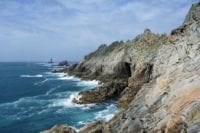
At the Pointe du Raz, Brittany shows its impetuous side. The waves of the Atlantic break against the rock formations that jut out into the sea. From the high cliffs of the Pointe du Raz and the surrounding ones, this is a magnificent natural spectacle.
Crozon Peninsula
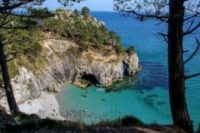
Between the Rade de Brest and the Baie de Douarnenez lies the Crozon Peninsula. With countless bays, kilometres of beaches and wonderful hiking trails through the landscape of Brittany’s natural park, Crozon is one of the most popular holiday destinations and still manages to remain authentic.
Ouessant
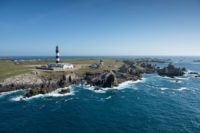
Off the coast of Finistère lies the island of Ouessant, one of the most interesting places to visit. The treeless island is hardly populated and is known for its inhospitable conditions. Apart from 2 lighthouses, there is above all wild nature to marvel at. A detour has a sense of adventure – ideal for a day trip!
Pont-Aven
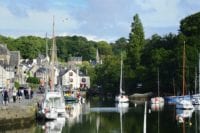
Pont-Aven is all about art. Paul Gauguin named a style of painting after the town in the south: the School of Pont-Aven. Today, the art museum is perhaps the most important sight in Pont-Aven. Besides the town itself, with its picturesque centre along the little river Aven.
Huelgoat
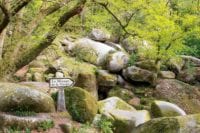
Impressive rock formations are not only to be found on the coast of Finistère. In the middle of the forest of Brittany lies Huelgoat, famous as a setting for sagas and legends. In front of the moss-covered stones with names like “Trembling Stone” or “Devil’s Grotto”, one’s imagination can run away with one.
Getting There & Connections
Like everywhere else in France, the roads in Finistère are free of charge and in good condition. Unless the farmers of Brittany are blocking the roads and motorways with strikes, getting to towns, sights and beaches is quick and congestion-free, even in high season. Parking spaces in the towns are mostly outside the old town centres, very few of which are chargeable.
The N12 motorway runs through the centre of Brittany, linking Rennes and Brest at the extreme edge of Finistère. Another important motorway is the N164 or N165, which runs from Nantes to Brest via Quimper. These motorways are toll-free for cars, motorbikes, caravans and campers, and the maximum speed is 110 km/h, as everywhere in France.
Distances in Finistère:
- Brest – Morlaix: approx. 45 minutes by car
- Quimper – Brest: approx. 45 minutes by car
- Morlaix – Concarneau: 1:30 hour by car
Finistère compact
Arrondissement & Cities
Quimper is the southernmost and largest arrondissement of Finistère. It is followed by the administrative district of Chateaulin, which forms the central part of Finistère. Morlaix to the east and Brest to the west make up the north of Finistère. Brest is not only the seat of a sub-prefecture, but also the largest city in Finistère, followed by Quimper and Concarneau in the south.
Weather in Finistère
The Atlantic Ocean determines the weather in Finistère. Due to the Gulf Stream, it rains more often in the north than in the south. The south is also warmer on average than the northern parts of Finistère. Severe temperatures are the great exception, and palm trees thrive on all the coasts of Finistère.
Economy
Tourism is economically important. Agriculture and fishing, especially oyster farming, are other important pillars of the economy in Finistère. Large industrial plants are hardly to be found, much to the delight of holidaymakers.
Breton
The Celtic language is very much alive in the extreme northwest of France. The most visible sign for holidaymakers: street signs in large parts of Finistère always name the respective place in both French and Breton.
Comité Régional du Tourisme de Bretagne | © Yanick Le Gal, © Emmanuel Berthier, © Donatienne Guillaudeau, © Yannick Derennes, © Ronan Gladu, © Jacqueline Piriou, © Simon Bourcier, © Pierre Torset, © Alexandre Lamoureux, © Nicolas Job, © Xavier Dubois
